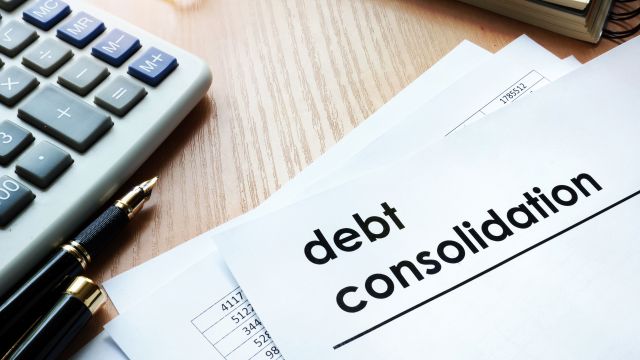Having trouble managing your student loans? You may have heard of loan consolidation, which turns multiple education loans into a single monthly payment. For some people, consolidation can help even out finances.
Of course, it depends on your situation. Do you need to lower your monthly payment or shrink your interest rate? Are you interested in paying off quickly or slowly? Could you be eligible for special repayment plans or loan forgiveness?
There’s a lot to consider, starting with the fact that two different kinds of student loan consolidation exist: private and federal.
Private consolidation
Private consolidation, also known as student loan refinancing, is done through banks, credit unions or online lenders. You can bundle federal student loans and private ones this way, or opt to consolidate federal loans with the government and private ones through a private lender.
An application fee may be necessary, and while a lower interest rate is possible, it’s not guaranteed. That’s because your credit score, employment background, education history and current income are all taken into account when determining both interest rate and whether you’re eligible to consolidate. Generally speaking, you’ll need a credit score in the high 600s (or a co-signer), though you can expect to see interest rates from as low as 2 percent to more than 9 percent.
Know that once any federal loans go private, you’re no longer eligible for programs like income-based repayment or Public Service Loan Forgiveness.
Federal consolidation
Federal consolidation is done through the US Department of Education (DOE) and is for federal student loans only. Most loan types are eligible as long as they are currently in repayment or the grace period. Check this DOE list to see if your loans are eligible.
Your monthly payment may be lowered because the term of the loan is being extended. For example, the handful of 10-year loans you took out a few years ago will become a single loan with a 10- to 30-year payback horizon.
What doesn’t get lowered: your interest rate. The new loan’s rate is a weighted average of the old loans’ rates, rounded up to the nearest one-eighth of 1 percent and locked in for the life of the loan.
The longer loan term means more interest paid overall. For example, if you change a 10-year loan into a 25-year term, you’ll pay almost twice as much interest, unless you find a way to retire the loan faster.
Paying more for a while could be worth it if there’s no other way to afford your student loans along with basic living expenses. And if you have defaulted on federal loans, consolidating them for a lower payment is one way to get back on track.
Note: It doesn’t cost anything to apply for federal loan consolidation. Ignore any companies that offer to consolidate your loans for a fee.
Other things to consider
When determining whether consolidation is right for you, keep these things in mind:
- Does your current lender give price breaks for on-time payments or direct debits? Factor those into your decision-making.
- Would you consider income-based repayment or some other special plan? These aren’t possible with private consolidation.
- Are you (or could you become eligible) for Public Service Loan Forgiveness? This may not apply with private loans.
If you just need a little short-term relief, deferment, forbearance or income-based repayment might work—and you wouldn’t be locked into consolidation.
For some, the “debt snowball” principle is a good way to handle multiple loans. Make extra payments to the principal amount of your highest-interest loan to retire it fastest (thereby reducing your overall interest) and then attack the next-highest-interest loan.
Understand that with both federal and private consolidation, it’s essential to keep making your regular payments until the new loan is disbursed. That usually happens within 60 days.
That’s a lot to take in. Before you decide, weigh the pros and cons with help from the DOE’s Federal Student Aid page and the loan consolidation calculator from FinAid.org. These resources will help you make the best decision for your current and future finances.






